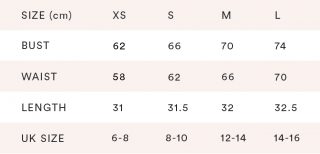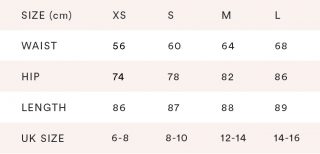Oct 13, 2018
Low FODMAP, IBS & All Things Bloating
by Charlotte Burdall
So it really is time that I shared with you what really is Low FODMAP?
Really, I think its important that I give you some background on how I realised that I should follow a Low FODMAP diet for a small period of time to understand why I was in so much turmoil with my body. I will set the scene. I was 14 and I had terrible problems with my stomach, I was bloated, my stomach was always in terrible knots and to be honest I hated everything that I ate. It wasn’t because I didn’t like the food I was eating I just hated the way that it made me feel.
So my mum being the amazing woman that she is made me an appointment at the doctors and when I say I had every test under the sun, I had every test under the sun. Blood tests, gas tests, stool tests; you name it I had it. The process took months and months and I was finally diagnosed with chronic IBS.
Normally when you are diagnosed with an illness you expect to be presented with a cocktail of medication, but to my surprise I was told that I needed to eat healthy and all my symptoms would go away. But go away they did not. I ate healthily anyway and I began to think that I had been diagnosed with a myth of an illness. My suffering continued for another four yours before I decided to once and for all really understand what IBS was and what was causing all of my digestive issues.
I did a lot of reading and I stumbled across the Low FODMAP diet. So as a last resort I decided to give it a go to see if it could give me a glimmer of HOPE. Everything will be okay in the end, if its not okay its not the end.
What are Low FODMAPS?
FODMAP’s define groups of carbohydrates that are notorious for triggering digestive symptoms like bloating and terrific stomach pain.
They can be broken down into four categories; Oligosaccharides,Disaccharides, Monosaccharides and Polyols. Following a Low Fodmap diet can greatly reduce your digestive issues and for me it has really changed my life.
There are three specific stages of the Low FODMAP diet; Restriction, Reintroduction and Personalisation. So I’m going to talk you through each stage and I hope that my tips will be useful for you. Something to note is that every body is different so the FODMAP’S that effect me might be different to the FODMAP’s that effect you.
Restriction
The first stage of Low FODMAP is a really strict diet of avoiding ALL high FODMAP foods. This stage should last between 3-8 weeks to allow your body to cleanse your digestive system of all triggers. For me I followed this for 8 weeks as I wanted to ensure that I obtained the desired results if the diet was going to work for me. If you need a list of high FODMAP foods, click here for the guide I used.
Reintroduction
The second stage of the Low FODMAP diet is reintroducing the high FODMAP foods you eliminated in the previous stage. You still keep eating Low FODMAP but you reintroduce the high FODMAP foods one by one for three days each. For me I found through reintroduction that high polyols, monosaccharides and oligosaccharides, all effect me and I can eat a limited or none of the foods in these groups.
Personalisation
The final stage of the Low FODMAP diet is personalising your diet to your tolerances. I for example cannot have any wheat or soya and there are numerous fruits and vegetables that I have to avoid. I can however have small amounts of dried fruits but if I have large amounts my IBS symptoms are very prominent.
I think for me the biggest learning is understanding my own body and patterned with exercise this diet has really changed my life. My digestive track is so much more healthier and I can feel the difference in my body as I can actually absorb the nutrients that my body needs to survive. Cooking food from scratch, although a lot more time consuming is so much better for you and you can actually control what you put into your body.

Our Size Guides
Sports Bra Size Guide

Leggings Size Guide

